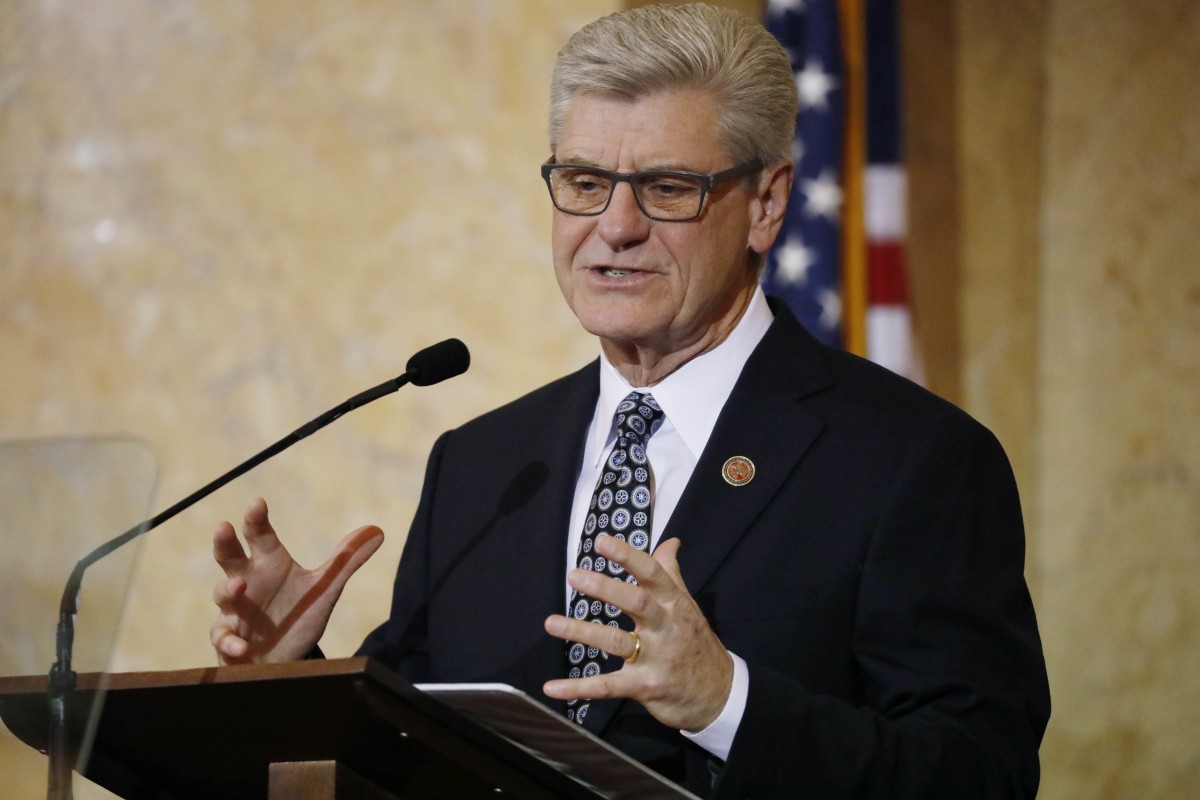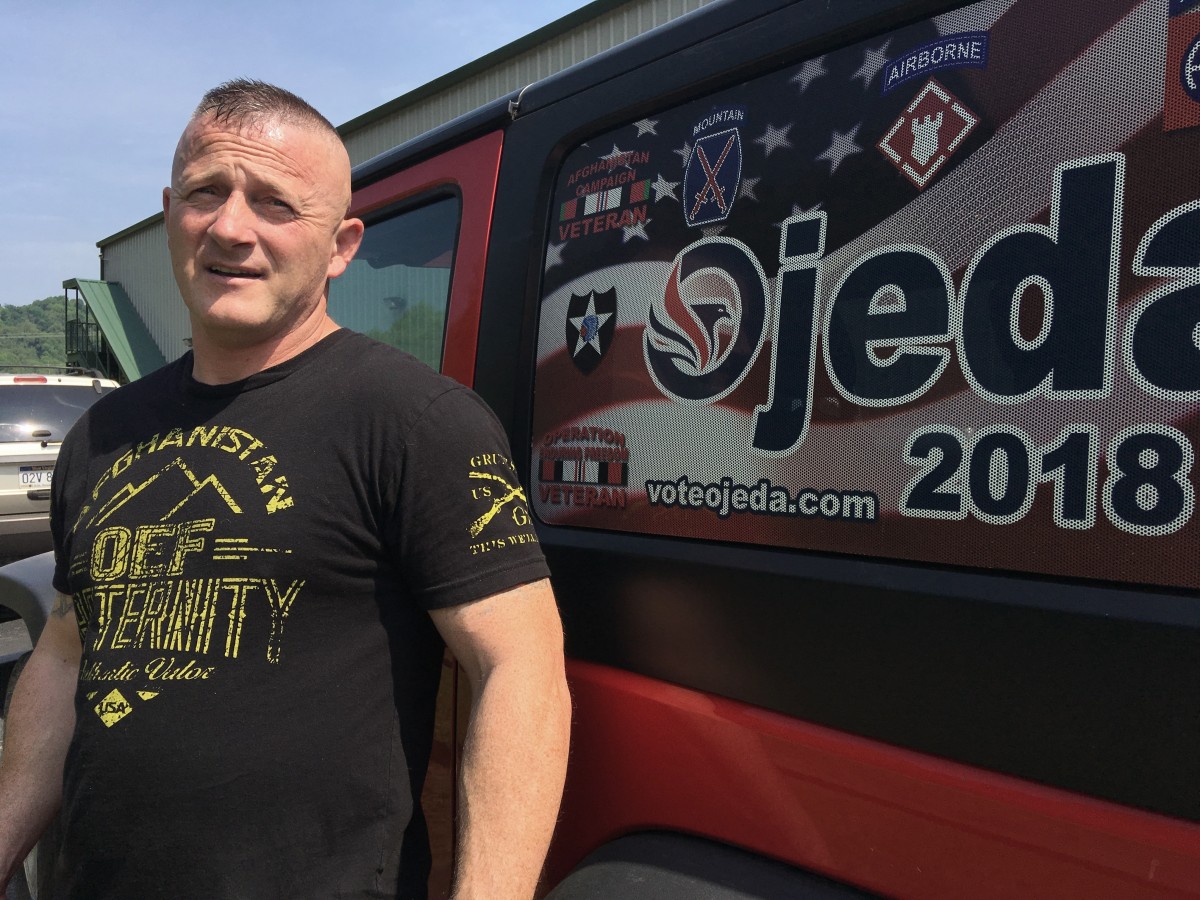No matter how you do the math, the balance of power in the U.S. House and Senate this midterm election cycle doesn’t lie in the results of Appalachian races.
Sure, the runoff between West Virginia Democratic Sen. Joe Manchin and his challenger, Republican Attorney General Patrick Morrisey, has been played up in the national headlines as being one of the most crucial races in the country, but when it comes right down to it, who gets to take or keep the majority in Congress will depend on the outcomes of many races outside the region.
But while it might not be the deciding factor, the Appalachian political math this year still has implications for major policy battles in Washington, D.C., and beyond, and for the politics of the region as a whole.
Consider the vertical trajectory of legislation regarding trade, heavy and extractive industries, or health care and you soon realize that the Appalachian math matters less as a vote tally in the chambers of Washington’s Capitol and more as a pathway to either advance some of the key elements of the current administration’s policy, or as a means to curb it, primarily on state levels, but with national consequences.
Any number of Appalachian issues are at the ideological center of the GOP platform this year and there is no shortage of politicians, both newcomers and incumbents, who are eager to side with President Trump on issues related to international trade, the extraction of natural resources, or union rights, just to name a few, in the hopes of increasing their chances of a November win.
Some of those eager politicians are already in office and are using messages of support for the President’s positions as the crux of their campaigns. And then there are those running in extreme opposition, defining their role as an essential check on the president and his agenda, while forcing their political party to rethink their national platform.
The Numbers
In total, the GOP holds 40 House seats that are up for reelection this November in Appalachian states. Not all of them are competitive and some are solidly red, seemingly decided before a ballot has even been cast.
But that’s 40 seats in 13 states. Democrats need to gain 24 to flip the House, while holding on to all 194 they already occupy in districts across the country. Three of the 13 Appalachian states– New York, Virginia and Maryland– went for Hillary Clinton in 2016 and Pennsylvania was an extremely close call.
Pennsylvania was also one of two states that went for a Democrat in a special election in March of this year, putting Connor Lamb in the seat representing state’s 18th District, but now, the state has undergone redistricting and even the newly elected Lamb is running in a different congressional district this fall.
The second state with a Democratic winner in a midterm special election? Also in Appalachia.
Alabama voted Doug Jones to the U.S. Senate in December 2017. Once thought to be a long shot, Jones took the race from Republican Roy Moore, a favorite of Trump who faced an onslaught of sexual assault allegations during the race.
In the U.S. Senate, the Democratic Party is currently defending 10 seats in states that went for Trump in 2016, including three in the Appalachian states of Ohio, Pennsylvania and West Virginia. Over the course of the past several weeks, many of those races seem to have swayed one way or another, but the stakes are still high in races that perhaps unexpectedly became competitive.

West Virginia, as we mentioned, is one of those close races. There, incumbent Joe Manchin has been particularly careful to avoid upsetting his voters in his increasingly tight race against Morrisey. In his latest gesture towards the predominantly conservative electorate of his state, Manchin voted to confirm newly instated Supreme Court Justice Brett Kavanaugh after a highly controversial set of hearings.
Manchin’s was the only Democratic vote supporting the embattled nominee, who faced accusations of sexual misconduct in his high school and college years, but Manchin’s reelection even after the vote isn’t a sure thing.
The GOP holds just a two seat majority in the country’s upper chamber and if it flips, the Senate could be an incredible hindrance to the White House. But the general consensus is that it will be difficult for the Democrats to even preserve the current 49-51 composition of the chamber.
For the White House, It’s Not All About the Congress
There is, however, another key elected position that is disproportionately important to the success or failure of Trump’s policy goals: the governor’s office.
The executive of each state sets the tone for how their government will interact with the administration at the federal level in a variety of ways, and, again, many of the issues that are important to the president are at the forefront of the minds of Appalachian voters.
For example, 13 governors make up the guiding board of the Appalachian Regional Commission. These 13 chairmen work with a co-chair appointed by the president, who is at the helm of the agency back in Washington, D.C. While Appalachians may not be voting for a new governor based on the impact to that little known commission, the powerful body decides how millions of government dollars will be allocated for specific economic development programs across the region.
Eight Appalachian states will elect their governors this November, which could result in a significant shift in the balance of power on the Appalachian Regional Commission, but the outcomes will also have a major impact on the implementation and public perception of federal policies, starting with the Trump administration’s push to deregulate a whole host of industries.

Before heading to a campaign rally in Iowa this month, Trump announced his administration would lift restrictions on the sale of ethanol gasoline, allowing for the year-round sale of gas that contains 15 percent of the corn product, typically a winter only formula. That is a major policy win for corn growers in states like Ohio.
“Ethanol is an important part of Ohio’s $124 billion food and agriculture industry as the state is home to several refineries that utilize corn grown and harvested in Ohio,” Mark Bruce, communications director for the Ohio Department of Agriculture, told 100 Days in an email.
But it takes a like-minded governor not to challenge a federal deregulation like that, one that so far has only been popular with those involved in ethanol production.
In Ohio, Republican Attorney General Mike DeWine has been a staunch supporter of President Trump and received his endorsement in the gubernatorial race there against Richard Cordray, a Democrat and the former head of Obama’s Consumer Financial Protection Bureau. While DeWine initially had a major lead in the race, the latest polling shows it could be a closer race than many thought.
The Future Appalachian Impact on Trump’s Deregulation
There are a number of Appalachian states that do not have their chief executive on the ballot this year, though, that will continue to be crucial to the success of Trump’s deregulation goals– goals that will likely become talking points in future elections.
Aside from changes in ethanol formulas, Trump has consistently supported changing regulations that have bolstered extractive industries that otherwise could be increasingly sidelined in Appalachian states. One of the most prominent examples of which is the rollback of the Obama-era Clean Power Plan (CPP). Trump touted the idea as a lifesaver for places like West Virginia, promising the resurgence of coal jobs.
While states like California chose to legally challenge the White House over the issue, West Virginia remains politically supportive of Trump largely based on this coal narrative. Republican Gov. Jim Justice went as far as publicly praising the President’s decision.
“The ACE [Affordable Clean Energy] rule will help West Virginia big time and will bring back energy jobs like you can’t imagine,” he said at a Trump rally in the state’s capital in August. “To have this announcement on the day President Trump visits West Virginia for the sixth time is just incredible and another testament to his commitment to helping our great state and country.”
The administration is moving on deregulation in other areas that will impact the coal industry as well, including changes to coal ash storage and disposal rules. The Environmental Protection Agency recently extended the time companies have to close storage ponds within five feet of a groundwater aquifer, a regulation created in 2015, and suspended the monitoring of some groundwater near coal ash dump sites.
After Hurricane Florence hit North Carolina this fall, that issue was thrust into the political spotlight. The breach of a dam there allowed coal ash stored at a power plant to flow into a nearby river, potentially harming not just the environment, but also people living in the area.
Then there are regulations on fuel efficiency and emissions standards being rolled back, reducing strains on car manufacturers in Kentucky and Mississippi, two of the nation’s automotive manufacturing powerhouses.

Mississippi’s Gov. Phil Bryant couldn’t be happier about – or more supportive of – the administration’s moves towards deregulation in this area, but Bryant can’t run for reelection next year. He’ll be term-limited out and a new governor in that state could change the state’s willingness to work with the federal government on the deregulation of such industries.
Appalachia’s Push for Progress in the Democratic Party
But it’s not just the Trump administration’s future policy efforts that could be impacted by the results of Appalachian midterm races. A wing of the Democratic Party has been gaining ground across the country– progressives– and the success or failure of progressive candidates in the region could help force the national party to shift its overall message heading into the next presidential race in 2020.
Many of these politicians were inspired by the presidential run of Vermont Sen. Bernie Sanders, who was popular in largely conservative areas. Sanders, for example, won West Virginia in the 2016 primary against eventual nominee Hillary Clinton and today, candidates are relying on his populist ideas to inspire people to get out to vote.
Perhaps no one has received more national attention for doing so in the region than a candidate in West Virginia’s 3rd Congressional District, Democratic state Sen. Richard Ojeda.
Ojeda is unapologetically West Virginian. He’s also not ashamed of his vote for Trump, but since the 2016 election, Ojeda said his views have changed and he’s become far more critical of the president.
“Our coal miners are working…But I’m not happy with a lot of things. Where are those jobs that were supposed to come from overseas back to America? We’ve got factories relocating to places like Mexico,” Ojeda said. “I’m not happy with people he surrounded himself with. Betsy DeVos is a trainwreck. I think he has brilliant military men surrounding him, but he doesn’t listen to them.”

Ojeda has been a staunch supporter of unions in West Virginia, making a name for himself nationally during the West Virginia teachers’ strike earlier this year, which now appears to be the cornerstone of his support in the race.
Asked about why he runs as a Democrat, he harkens back to the old days of the party, days in which, according to Ojeda, it cared about the workers and the little guy. He firmly believes that going back to that old set of Democratic virtues is a question of survival for the party in the future.
“We have got to go back to our roots, because if we got people that want to claim to be Democrats than I’m going to expect you to be a Democrat and that means taking care of our working class,” Ojeda stated emphatically.
When asked if he received any calls or support from the national Democratic leadership in his race, Ojeda responded with one word: “No.”
The endorsement of the national Democratic Party appears to still make a difference in primary races, according to an analysis of primary results by FiveThirtyEight, but Ojeda made it beyond that primary run without their support.
Still, he doesn’t feel sidelined. A number of representatives in the U.S. House, as well as Senate, supported him through phone calls and donations to his campaign, according to Ojeda, because they believe in reshaping the party just like him.
While the makeup of the House and Senate may not be decided by Appalachian states alone, the results of midterm elections in the region will still play a significant role in making sure that the goals of the White House and the GOP leadership are met in full.
But, with candidates on the ballot like Ojeda, Appalachia is also a region with significant potential for the Democrats. If the party chooses to start rebuilding its relationship with working class, blue collar Americans who proved their loyalty many times before, the region could prove a redemption story for the party.
Additional research for this story was done by Emily Martin.



